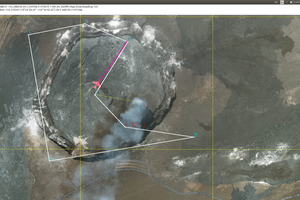Introduction: The uLabel system, an evolution of the LASK4 device, is a groundbreaking project jointly developed by Ultimate Robotics and Open Muscle. It's designed to measure the movement and force of all five fingers, expanding its capabilities beyond the original four-finger design.
Key Features:
- Five-Finger Measurement: Enhanced from the LASK4's four-finger model, uLabel accurately measures all five fingers.
- Somatosensory Feedback: As a somatosensory device, it provides real-time feedback for hand rehabilitation, enhancing the user's recovery journey.
- D'Addario Finger Training Integration: Maintains the use of the D'Addario finger training device, ensuring consistent quality and user experience.
- Customizable Components: Comes with custom 3D STL file add-ons and a specially designed PCB for precise movement and force measurement.
- Machine Learning Applications: Ideal for feature data labeling in machine learning, it plays a crucial role in AI research and development.
Technical Specifications:
- Connectivity: The uLabel system utilizes UDP packets via the ESP32-S2 for transmitting sensor data to an accompanying computer.
- Software: The system operates on micropython, embracing open-source and open-hardware principles. This facilitates widespread innovation and adaptability, allowing others to build upon and enhance the design.
- Versatility: Initially aimed at hand rehabilitation, uLabel's potential extends to labeling training data for the Open Muscle Band in the prosthetics biometric sensor domain. Its adaptable design hints at future applications for measuring movement and force in other body parts.
Explore More: For a deeper insight into uLabel's capabilities in machine learning and hand rehabilitation, check out our latest video featuring the system in action. Stay updated with our project's progress and access all necessary resources on our GitHub page.
The device was designed to label the training data accumulated by theOpen Muscle Band but as been designed to work with uMyo by Ultimate Robotics as well as any other forearm muscle sensing device.
Check out the latest video showing the LASK system being used in machine learning for open muscle!
The uLabel Version Zero prototype was sponsored by PCBWay!
 TURFPTAx
TURFPTAx




 Psyrax
Psyrax
 Manoj kumar
Manoj kumar

Nice project! The way you're measuring finger pressure using a PCB with guitar finger levers is interesting. I used a very similar guitar training device for a somewhat similar project (at https://hackaday.io/project/160690-ergonomic-handheld-mouse-keyboard-alternative). My method with magnets & hall effect sensord doesn't require a custom PCB and custom 3D print, but it requires very delicate solder hacking skills! So your method seems better for mass production than my method 👌
I like your idea of using it to train a Myo muscle prediction algorithm, I hadn't thought about a project using that, so I'll be interested to see how your project goes. I plan on eventually building more gadgets for handicapped people.